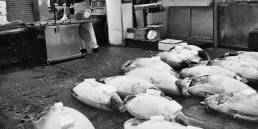
JERRY SIEGEL (American, b. 1958 Selma, Alabama)
I am a strong believer in place, and how a region, community and a home will shape who you are. The place I know, where I was raised, is the Black Belt region of the American South. It is how I was raised, as a Southerner and as a Jew in a small southern town, instilled with belief in family, tradition and community service that motivates me to document the ongoing struggles we face in the region.
BIO:
Jerry Siegel was born and raised in Selma, AL, and graduated from the Art Institute of Atlanta. He was awarded the Grand Prize of the first Artadia Award in Atlanta. While successfully maintaining a commercial photography studio in Atlanta since the mid 1980’s, he found
his passion working on personal projects.
His first monograph, FACING SOUTH, Portraits of Southern Artists, was published by the University of Alabama Press and features portraits of 100 Southern artists. This body of work has been featured in 6 solo museum exhibitions in Alabama, Georgia and Louisiana.
His second book, Black Belt Color, published by the Georgia Museum of Art in Athens, GA, focuses his attentions on documenting the unique, cultural landscape of the South, concentrating on the Black Belt region of Alabama.
His work is in the permanent collection of 17 museums and many private and corporate collections including the High Museum in Atlanta, GA, Ackland Art Museum, University of North Carolina, Chapel Hill, NC, Virginia Museum of Fine Arts, Norfolk, VA, LSU Museum, Baton Rouge, LA, Ogden Museum of Southern Art in New Orleans, LA, Georgia Museum of Art, in Athens, GA, The Museum of Contemporary Art of Georgia in Atlanta, Birmingham Museum of Art, in Birmingham, AL, the Telfair Museum, Jepson Center for the Arts in Savannah, GA, The Morris Museum in Augusta, GA and many other Southeastern U.S. Museums.
Throughout his artistic career, Jerry Siegel has sought to photograph what his eyes see and what his heart connects to. The renowned master photographer Arnold Newman once said about Siegel’s work, “This is how it should be done. This is not only the work of a professional but the work of an artist”.



